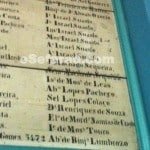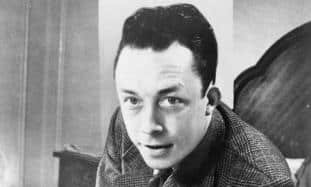This is the weekly column of David Shasha in eSefarad.
The following article was published in the Sephardic Heritage Udate #605
This Day in Jewish History: First Sephardic Congregation Established in Amsterdam
By: David B. Green
From Haaretz, October 2, 2013
 On October 2, 1596, according to tradition, the first congregation of Sephardi Jews in Amsterdam had its first service. It was on that day, Yom Kippur of Hebrew year 5357, that – at least according to legend – community dignitaries Manuel Lopez Pereira, Maria Nunez and Miguel Lopez met for prayers in the home of Don Samuel Palache, together with 13 other Jews.
On October 2, 1596, according to tradition, the first congregation of Sephardi Jews in Amsterdam had its first service. It was on that day, Yom Kippur of Hebrew year 5357, that – at least according to legend – community dignitaries Manuel Lopez Pereira, Maria Nunez and Miguel Lopez met for prayers in the home of Don Samuel Palache, together with 13 other Jews.
For most of the first century after the expulsion of the Jews from Spain, Jewish refugees had not been permitted to settle in the Low Countries. It was only after the Netherlands gained independence from Spain, in 1581, when it joined the Republic of the Seven United Provinces, that relative religious freedom was allowed, making it possible for Jews, among others, to settle there.
Tradition says that Manuel Lopez Pereira and Maria Nunez, a brother and sister, and their uncle, Miguel Lopez, were Portuguese Conversos who set forth from their birthplace in 1593 in search of a place where they could live as Jews. With them on their ship was a large group of other Jews. En route to the Netherlands, they were stopped by a British ship and brought to shore as captives. There, according to the legend, a nobleman saw the beautiful Maria and asked to marry her. Hearing about this, Queen Elizabeth asked to meet the young Jewish woman, and also captivated by her beauty, ordered the release of her and her fellow passengers, together with their ship.
The group continued on to Amsterdam, where, in 1596 (some sources date the event to 1603), they were introduced to Samuel Palache, who was the Moroccan ambassador to the Netherlands, and a Jew. It was at his home that, on Yom Kippur of that year, they met for prayers. The gathering, however, drew the attention of legal authorities, who took the entire group in for questioning, on suspicion of being Catholics. Fortunately, one of group, Jacob Tirado, spoke Latin and was able to explain that he and his colleagues belonged to the persecuted, not the persecutors responsible for the Inquisition. They were released, and permitted to complete their prayers.
Some time later, they moved into a prayer house of their own, which they named Beth Jacob, in honor of the same Jacob Tirado, consecrating it on Rosh Hashanah of the following year.
In 1608, a group of Jewish migrants from North Africa, centered around Samuel Palache, opened another synagogue, which they called Neveh Shalom. Together with another Sephardi synagogue, all three merged back into a single united congregation in 1639, called Talmud Torah. In 1615, the Amsterdam Jewish community was officially recognized, and given permission to operate freely, with the only restrictions being a prohibition on intermarrying with Christians or from publicly criticizing Christianity.
By the end of the 17th century, according to the Dutch-Jewish historian Edward van Voolen, there were as many as 7,500 Jews in Amsterdam, both Sephardi and Ashkenazi, the latter coming from Germany and later from Poland. They were heavily involved in commerce and trade (at one point Jews controlled one-quarter of the shares of the Dutch East India Company), but also medicine, academia, and most other walks of life. British Historian Cecil Roth even suggests that “the greatest period of Dutch prosperity coincided with the period of the Marrano immigration and activity.”
—————————————————————————————————————-
 by David Shasha to eSefarad.
by David Shasha to eSefarad.
Copyright David Shasha & eSefarad all rights reserved
Copyright David Shasha & eSefarad todos los derechos reservados.
David Shasha is the founder and director of the Center for Sephardic Heritage in Brooklyn, New York designed to raise awareness of the history and culture of Arab Jews. He publishes the Sephardic Heritage Update, a weekly e-mail newsletter available on Google Groups. He has written for publications such as the Huffington Post, Tikkun magazine, The Progressive Christian, and The American Muslim. You can contact him at david.shasha.shu@gmail.com
 eSefarad Noticias del Mundo Sefaradi
eSefarad Noticias del Mundo Sefaradi

